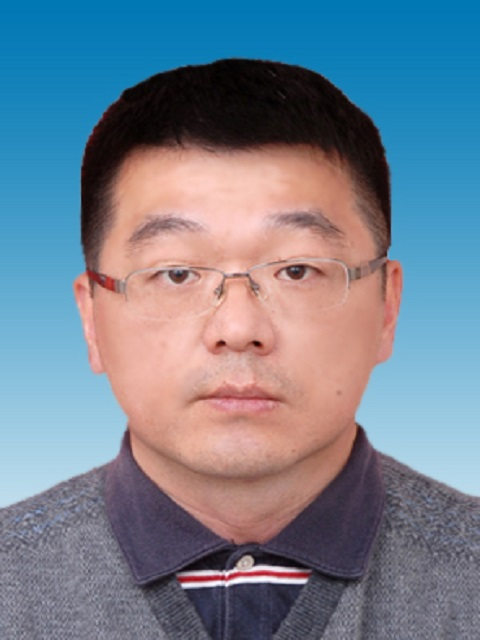Principal Investigator
Zheng Wang
MRI, nonhuman primate models, psychiatric disorders, neuromodulation techniques
address: Rm 336, LUI Che Woo Blding, Peking University
email: zheng.wang@pku.edu.cn

Research Objective:
Our lab mainly focuses on integrating advanced MRI methods with network computation and neuromodulation techniques to investigate the neuropathological and therapeutic mechanisms of psychiatric disorders such as addiction, obsessive-compulsive disorder in both human patients and monkey models. We are currently looking for talented graduate students and postdocs with professional training in cognitive/systems neuroscience, psychology, mathematics, MRI physics, computer science or appropriate engineering disciplines.
Selected Publications:
1. Chen XY1, Wang Z1, Lv Q, Lv QM, van Wingen G, Fridgeirsson EA, Denys D, Voon V, Wang Z*, Common and differential connectivity profiles of deep brain stimulation and capsulotomy in refractory obsessive-compulsive disorder, Molecular Psychiatry, 2022, in press.
2. Li G, Huang P*, Cui SS, Tan YY, He YC, Shen X, Jiang QY, Huang P, He GY, Li BY, Li YX, Xu J, Wang Z*, Chen SD*, Mechanisms of motor symptom improvement by long-term Tai Chi training in Parkinson’s disease patients, Translational Neurodegeneration, 2022, 11: 6-16.
3. Qin DD1, Zhou JK1, He XC1, Shen XY1, Li C, Chen HZ, Yan LZ, Hu ZF, Li X, Lv LB, Yao YG*, Wang Z.*, Huang XX*, Hu XT*, Zheng P*, Depletion of giant ANK2 in monkeys causes drastic brain volume loss, Cell Discovery, 2021,7(1):113-115.
4. Hong J1, Bo TT1, Xi LQ1, Xu XQ1, He NY1, Zhan YF, Li WY, Liang PW, Chen YF, Shi J, Yan FH, Gu WQ, Wang WQ, Liu RX, Wang JQ*, Wang Z*, Ning G, Reversal of functional brain connectivity associated with gut microbiome and gastrointestinal hormones after vertical sleeve gastrectomy in obese patients, Journal of Clinical Endocrinology & Metabolism, 2021, 106(9): e3619-e3633.
5. Zhang CC1, Kim S-G1, Li J, Zhang YY, Lv QM, Zeljic K, Gong HF, Wei HG, Liu WJ, Sun BM, Wang Z*, Voon V*., Anterior limb of the internal capsule tractography: relationship with capsulotomy outcomes in obsessive-compulsive disorder, Journal of Neurology, Neurosurgery, and Psychiatry, 2021, 92(6): 637-644.
6. Zhan YF1, Wei JZ1, Liang J, Xu X, He R*, Robbins TW, Wang Z.*, Diagnostic classification for human autism and obsessive-compulsive disorder based on machine learning from a primate genetic model, American Journal of Psychiatry, 2021, 178(1): 65-76. [Commentary by van den Heuvel OA, Can Transgenic monkeys help us innovate transdiagnostic therapies? American Journal of Psychiatry, 2021, 178(1): 8-10.]
7. Lv QM, Yan MC, Shen XY, Wu J, Yu WW, Yan SY, Yang F, Zeljic K, Shi YQ, Zhou ZF, Lv LB, Hu XT, Menon R, Wang Z.*, Normative analysis of individual brain differences based on a population MRI-based atlas of cynomolgus macaques, Cerebral Cortex, 2021, 31(1): 341-355.
8. Cai DC1, Wang ZW1, Bo TT1, Yan SY1, Liu YL, Liu ZW, Zeljic K, Chen XY, Zhan YF, Xu X, Du YS, Wang YW, Cang J, Wang GZ, Zhang J, Sun Q, Qiu ZL, Ge SJ*, Ye Z, Wang Z.*, MECP2 duplication causes aberrant GABA pathways, circuits and behaviors in transgenic monkeys: neural mappings to patients with autism, Journal of Neuroscience, 2020, 40(19): 3799-3814.
9. Yin DZ1, Zhang CC1, Lv QM, Chen XY, Zeljic K, Gong HF, Zhan SK, Jin HY, Wang Z.*, Sun BM*, Dissociable frontostriatal connectivity: mechanism and predictor of the clinical efficacy of capsulotomy in obsessive-compulsive disorder, Biological Psychiatry, 2018, 84(12): 926-936. [Commentary by Hoexter MQ, Are we ready for individualized target planning of ablative procedures in intractable obsessive-compulsive disorder? Biological Psychiatry, 2018, 84(12): e85-e87]
10. Lv QM1, Wang Z1, Zhang CC1, Fan Q, Zeljic K, Sun BM, Xiao ZP*, Wang Z.*, Divergent structural responses to pharmacological interventions in orbitofronto-striato-thalamic and premotor circuits in obsessive-compulsive disorder, EBioMedicine, 2017, 22:242-248.
11. Zhou TT1, Zhu H1, Fan ZX, Wang F, Chen Y, Liang HX, Yang ZF, Zhang L, Lin LN, Zhan Y, Wang Z, Hu H*, History of winning remodels thalamo-PFC circuit to reinforce social dominance, Science, 2017, 357: 162-168.
12. Yin DZ, Liu WJ, Zeljic K, Wang ZW, Lv Q, Fan MX, Cheng WH*, Wang Z*, Dissociable changes of frontal and parietal cortices in inherent functional flexibility across the human lifespan, Journal of Neuroscience, 2016, 36(39):10060-10074.
13. Lv Q1, Yang LQ1, Li GL, Wang ZW, Shen ZM, Yu WW, Jiang QY, Hou BY, Pu J, Hu H*, Wang Z.*, Large-scale persistent network reconfiguration induced by ketamine in anesthetized macaques: relevance to mood disorders, Biological Psychiatry, 2016, 79: 765-775. [Commentary by Arnsten AF, Murray JD, Seo H, and Lee D. Ketamine’s antidepressant actions: potential mechanisms in the primate medial prefrontal circuits that represent aversive experience, Biological Psychiatry, 2016, 79: 713-715]
14. Pu J, Wang J, Yu WW, Shen ZM, Lv Q, Zeljic K, Zhang CC, Sun BM, Liu GX, Wang Z.*. Discriminative structured feature engineering for macroscale brain connectomes, IEEE Trans Med Imaging, 2015, 34(11):2333-2342.